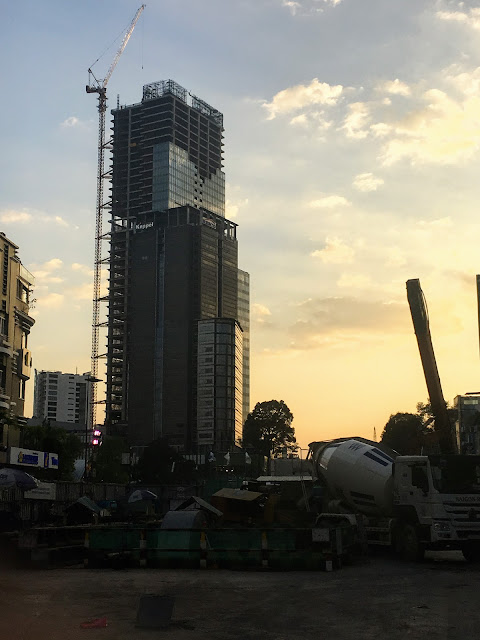It is now April the 12th, and I have finished my extensive trip. I plan to catch up on summarising the trip in a few posts over the course of the next week.
The trip as a whole has been a wonderful experience of many different cultures in Asia, we have been to Japan, Hong Kong, Vietnam, Cambodia, Thailand and India. We pick up where I left off with a post I wrote in Cambodia, but then didn't find a computer with which I could post it. The story continues on from the last post about our travels in the north of Vietnam,
South Vietnam
Na Trang
After a rough 12 hour bus journey, we arrived in Na Trang, and found we were in a place with a vibe quite unlike the small town, cosy feel of Hoi An.
Na Trang is a resort and city on the coast of Vietnam, but it was without most of the second-world roughness of cities we had been in before. It seemed predominantly to be a beach side resort for Russian holidaymakers, their version of Benidorm. While the beach promised much, our one-day-one-night stopover was blighted by clouds and rain.
We took this opportunity in this well appointed resort to take a break from free-spirited, bargain basement travelling; clocked into a semi-decent hotel, and treated ourselves to a KFC
I had read that the journey to Dalat was a precarious one, but nevertheless, we got an early bus out of Na Trang and into the mountains. And yes it was precarous.
The journey started with good intentions, and as we climbed we got increasingly good views of the surrounding hills. Then we ended up in the clouds, the road becoming more and more winding.
Knowing the crazy attitudes of Vietnamese drivers, the fog, rain and winding roads, we both were convinced it was the end when the visibility reached about 2 meters, and evidence of landslides started appearing...
So no, the journey is not for the faint hearted, but after an hour or so of 5mph crawl, the clouds lifted, the roads straitened and we were safely delivered to Dalat.
Dalat
Dalat is known to some as the 'city of eternal spring', as despite its southerly position, it's altitude is sufficient to deliver comfortably cool temperatures year round. It was this reason why it found favour with french colonialists during the occupation. The comfort and lack of roughness had carried over from Na Trang somewhat intact too, many nice colonial villas stood, as well as modern versions in the style.
One sight in Da Lat that is certainly not a villa in the colonial style however, is architect Dang Viet Nga's Crazy House.
Equal parts Dali, Disney and Gaudi, this incomplete nest of reinforced concrete is a popular attraction to tourists visiting Dalat, as well as a guesthouse. A large central 'tree' branches out with spindly walkways which link several other mad-looking buildings.
After exploring the night markets of Dalat, we also made acquaintance with 100 rooves, a bar with interior fit-our by the same architect, which is a wonderfully bizarre place to have a few drinks atop, although if you drink too much you'll probably find yourself lost until the morning.
Dalat is also, with a semi-tropical take on the Lake District, a popular place for walkers and adventure-tourists. We took this opportunity to go canyoning in the surrounds of the Datanla waterfall, which was an exhilarating experience, including trekking, abseiling, sliding and cliff jumping.
Ho Chi Minh City
The feeling of comfort and prosperity continued in Ho Chi Minh City, or more historically, Saigon. By now it was clear that the former South Vietnam was simply a step ahead of the north. HCMC in particular is the best example of this, it has 8% of Vietnam's population, and produces 20% of it's GDP. The positive growth this city is experiencing was clear instantly from just the bus journey in, a large and sophisticated Japanese-sponsored metro system is in the full swing of development.
And skyscrapers are popping up all over the place.
The independence palace is another sight, with its grand blend of traditional and modern monumentalism. It was built by the south vietnamese government in the 60s to replace the old French palace, and its capture in 1975 marked the end of the Vietnamese war.
It was from Ho Chi Minh City on the 15th of February when our trip of Vietnam ended, and we took the bus over the border into Phnom Penh, capital of Cambodia.

























No comments:
Post a Comment